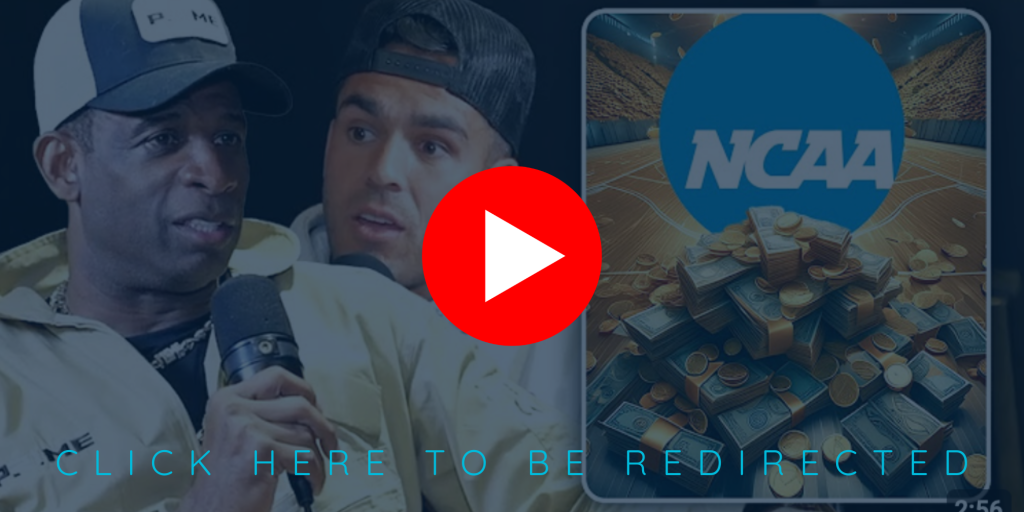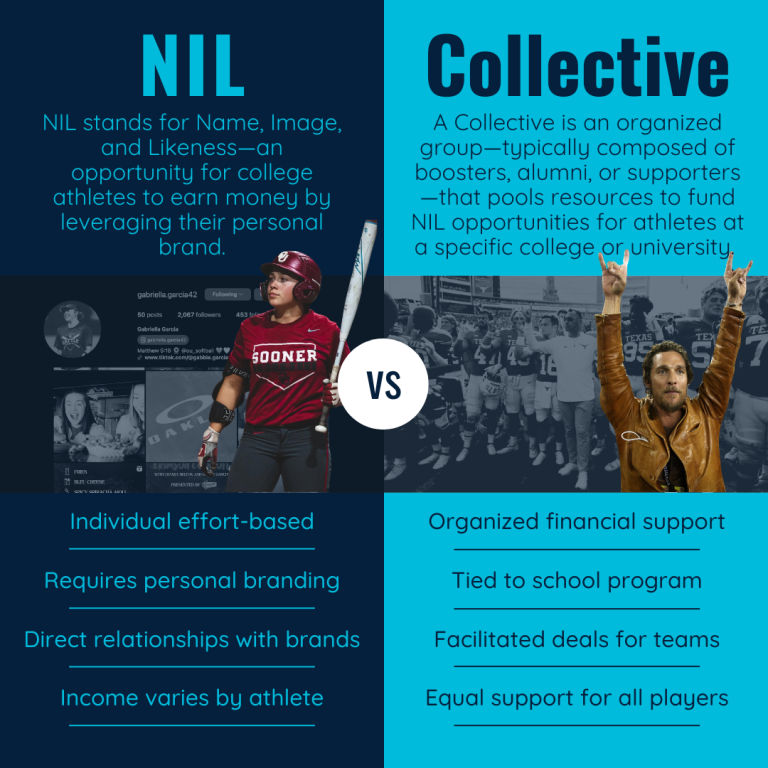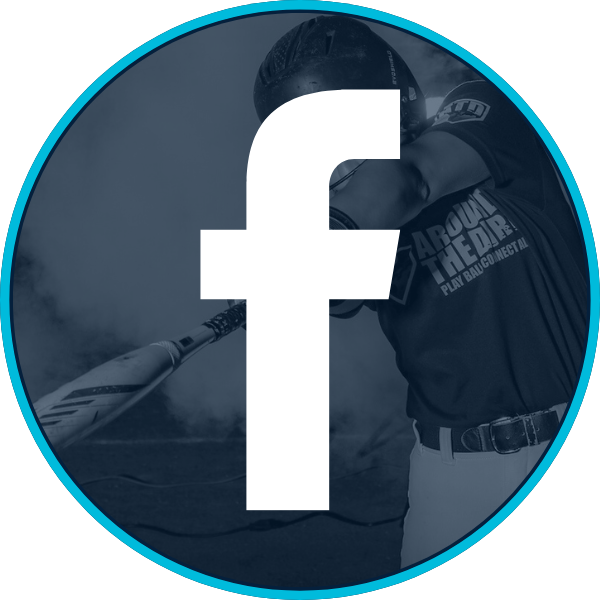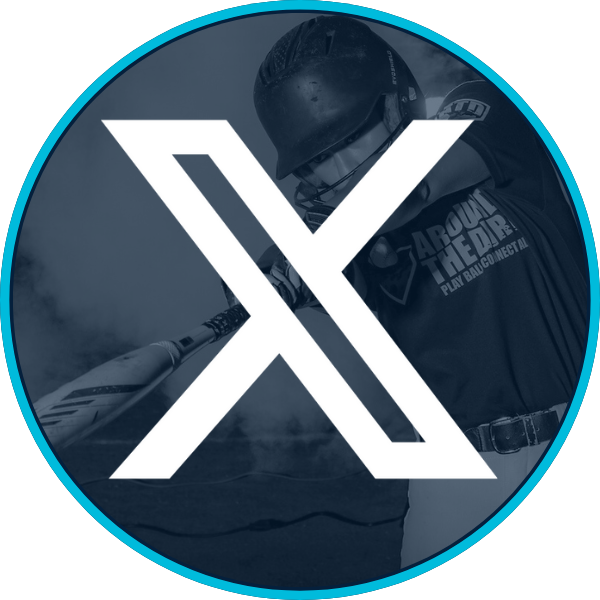When it comes to college athletics, few terms have sparked more interest and confusion than “NIL” (Name, Image, and Likeness) and “Collective.” These buzzwords have become integral to the recruiting landscape, leaving athletes and parents wondering: What do they mean, and how do they work? While both play significant roles in college sports, they are fundamentally different concepts.
Let’s break it down.
Watch this video for insights into the role of NIL and Collectives in shaping the modern college sports landscape:

What is NIL?
NIL stands for Name, Image, and Likeness—an opportunity for college athletes to earn money by leveraging their personal brand. The NCAA’s 2021 decision to allow athletes to profit from NIL marked a historic shift in college sports. Now, athletes can sign deals with companies to endorse products, appear in commercials, promote brands on social media, or even sell autographs.
NIL opportunities are tied directly to an athlete’s ability to market themselves. Examples include:
- A softball player with a strong social media following landing an endorsement deal with a sportswear company.
- A standout pitcher partnering with a local business to appear on billboards.
- Athletes creating personal merchandise or running youth camps to generate income.
Key Insight: NIL is about individual effort. Athletes earn money based on their marketability and relationships with brands. Studies suggest that athletes with robust personal brands are better positioned to secure lucrative NIL deals (Taylor & Schroeder, 2023).
What is a Collective?
A Collective, on the other hand, is an organized group—typically composed of boosters, alumni, or supporters—that pools resources to fund NIL opportunities for athletes at a specific college or university. Collectives often simplify the process for athletes by organizing deals on their behalf.
For example:
- A softball Collective might pool funds to ensure all players on the team receive equal financial support, regardless of their individual marketability.
- A baseball Collective could arrange for athletes to participate in community events or appearances in exchange for compensation.
Key Insight: Unlike NIL, which is based on personal branding and effort, a Collective provides structured financial support tied to the athlete’s association with the school program.
NIL vs. Collectives: The Key Difference
While NIL focuses on individual branding, Collectives act as an organized financial system to support athletes. However, confusion arises because many use “NIL” as a catch-all term for any athlete compensation. In reality, a significant portion of today’s athlete funding comes from Collectives.
SEO Keywords: NIL opportunities, Collectives in college sports, athlete compensation, college athletics, softball and baseball recruiting.

What Does This Mean for Athletes?
Understanding these concepts is critical for athletes and their families:
- NIL opportunities require effort. Athletes need to build their personal brand through social media presence, on-field performance, and networking.
- Collectives offer stability. Schools with strong Collectives may provide financial opportunities for athletes who aren’t individually marketable.
- Athletes can benefit from both. Some athletes secure deals through Collectives while leveraging personal NIL opportunities for additional income.
Research indicates that athletes who actively manage their social media accounts see a 40% higher chance of securing NIL deals (Johnson et al., 2022).
Key Takeaway for Parents and Athletes
When evaluating college programs, don’t just ask about NIL opportunities. Ask about the school’s Collective, its structure, and the support it provides. Many athletes may never land a major NIL deal, but Collectives can still offer meaningful financial benefits.
NIL and Collectives are reshaping the college sports landscape. Understanding these terms can help athletes maximize their potential both on and off the field.
Around the Dirt is here to help you stay ahead of the game. Stay connected with us by following us on social media for the latest updates and tips! Have questions or thoughts? Drop them in the comments below—we’d love to hear from you!




Resources:
Taylor, J., & Schroeder, M. (2023). "The Rise of NIL: Branding and Opportunities in College Sports." Journal of Sports Economics.
Johnson, L., et al. (2022). "Social Media’s Role in NIL Success." Sports Marketing Quarterly.
"Name, Image, and Likeness (NIL) and Collectives Explained." YouTube, uploaded by College Athlete Insights, January 2025, Watch here.